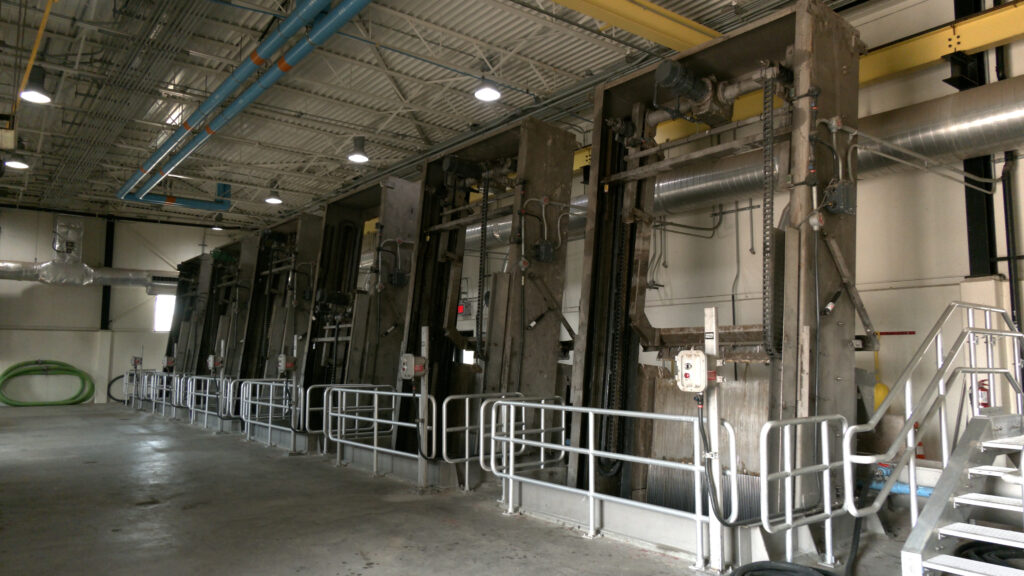Preliminary Treatment
Preliminary treatment removes large debris, trash, rags, and grit to protect downstream equipment and prevent inert materials from entering the treatment processes.
Preliminary treatment consists of removing non-degradable solids and abrasive grits to protect downstream processes. At Metro Water Recovery (Metro), this process consists of two separate systems: screening and grit removal.
Screening uses machines, called bar screens (or step screens), to remove large, untreatable, or unwanted materials, such as wood, plastics, paper, and “flushable” wipes that can clog pumps, mixers, and other equipment in the downstream treatment processes.
In the grit removal basins, the water is slowed down to allow dense particles and solids to settle. Due to their abrasive nature, sand and silt must be removed to protect pumps and pipes. Grit can also settle in aeration basins and digesters which can hinder treatment and take up valuable treatment volume.
The materials collected in screening and grit removal are washed, dewatered, and hauled to landfill for disposal.


Robert W. Hite Treatment Facility
The Robert W. Hite Treatment Facility (RWHTF) removes an average of six tons of grit and debris per day. The lighter organic particles remain in suspension and flow to the primary treatment process. The RWHTF preliminary treatment facilities are gravity-fed.
Northern Treatment Plant
The Northern Treatment Plant (NTP) requires an influent pump station prior to preliminary treatment due to the hydraulic profile of the interceptor and plant. The NTP collects and treats the foul air released during preliminary treatment, while the RWHTF does not.
Water Quality
Hover over the bar graphs below to see how much of the pollutant was removed during a previous treatment process, how much was removed during this treatment process, and how much is left to be removed in a future treatment process.
Key:
Previously removed pollutants from prior processes
Amount of pollutants actively being removed by the current process
Remaining amount of the pollutant
